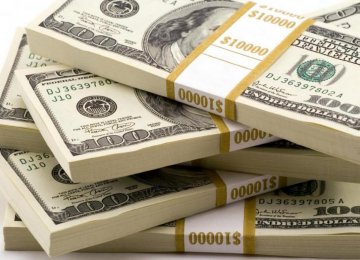Donald Trump, an American real-estate magnate and 2016 presidential hopeful for the Republican Party, has criticized the nuclear deal signed between Iran and the six world powers, arguing that whether US Congress approves it or not, Iran will still access its assets frozen overseas.
Trump estimated the assets at $150 billion.
“If the deal gets rejected, they [Iranians] still get all of this money,” he said on NBC’s Meet the Press on Aug. 16. Iranian officials have put the figure at $100 billion.
Citing experts, politifact.com said even if the US Congress rejects the July 14 nuclear deal–thus maintaining current US sanctions–other countries could stop enforcing their own sanctions anyway. As a result, Iran would be able to access at least some of its assets frozen under international sanctions.
However, experts said it’s highly unlikely that this would amount to $150 billion, the maximum estimate of how much Iran could benefit by the lifting of all international sanctions without regard to Iran’s outstanding financial obligations. Without United States’ participation, the best estimate the website could find was $40 billion.
“The $150 billion figure is on the high end of estimates of Iran’s foreign assets, which start as low as $25 billion,” said Garbis Iradian, chief economist at the Institute of International Finance.
Most experts the website interviewed, including Iradian, peg the unfrozen assets at about $100 billion, but no one is 100% sure of the precise amount.
“You can probably get to $150 billion if you count up every possible type of money that sanctions have made difficult for Iran to access and use,” said Richard Nephew, an expert on economic sanctions at Columbia University’s Center on Global Energy Policy.
Iran has financial obligations other than the sanctions, so even if all the sanctions are lifted, they won’t suddenly have all of these assets at their disposal. For example, Iran owes billions to China for infrastructure projects. Lower estimates take into account restrictions on the money other than the sanctions, Nephew added.
So even if the total assets are $150 billion, it’s unlikely that that much will actually be available to Iran when sanctions are lifted.
President Barack Obama’s administration has said that after Iran pays its outstanding financial dues, it will have about $56 billion at its disposal.
Experts believe that Iran will likely be able to get a good chunk of the money it currently cannot access, because other countries and international bodies, including the European Union and the United Nations, could decide to stop enforcing their own sanctions against Iran anyway.
Iradian estimated that Iran would be able to access $40 billion of its currently inaccessible assets in that scenario, and the Iranian economy could get an even bigger boost if European companies decide to invest heavily in Iran.
“The United Nations has already passed a resolution to provide Iran with the funds withheld under the sanctions if Iran meets its end of the bargain,” noted George Perkovich, an expert on nuclear strategy and vice president of studies at the Carnegie Endowment for International Peace.
Of course, Iran wouldn’t be able to access all of its assets in this scenario because much of them are tied up in the United States’ sanctions.
“There would be some crumbling of the sanctions wall, but that does not on its own free up the entire $100 billion,” Michael Malloy, a law professor at University of the Pacific McGeorge School of Law said, adding that the United States controls much of the oil market, which is important to Iran’s economy.
At the end of the day, the discussion entails a lot of speculation, but nearly every expert said there’s a reasonable likelihood that other countries would choose to stop enforcing sanctions no matter what the United States decides to do.
The website noted that it will be difficult for the Congress to maintain the sanctions because there would have to be enough votes to survive a presidential veto.





